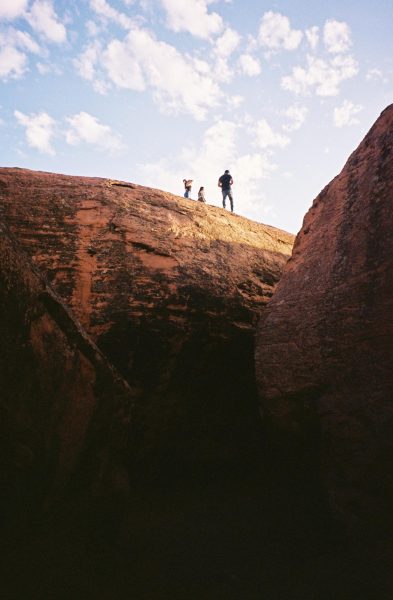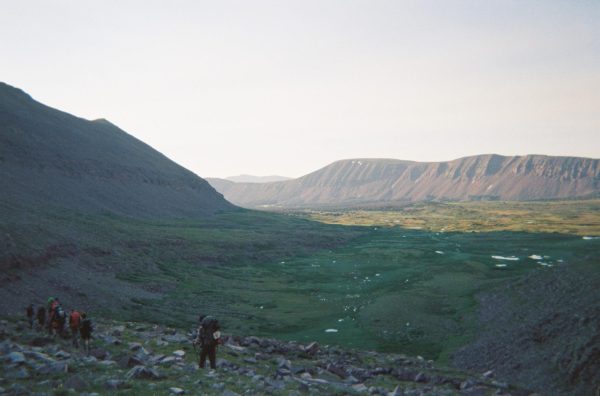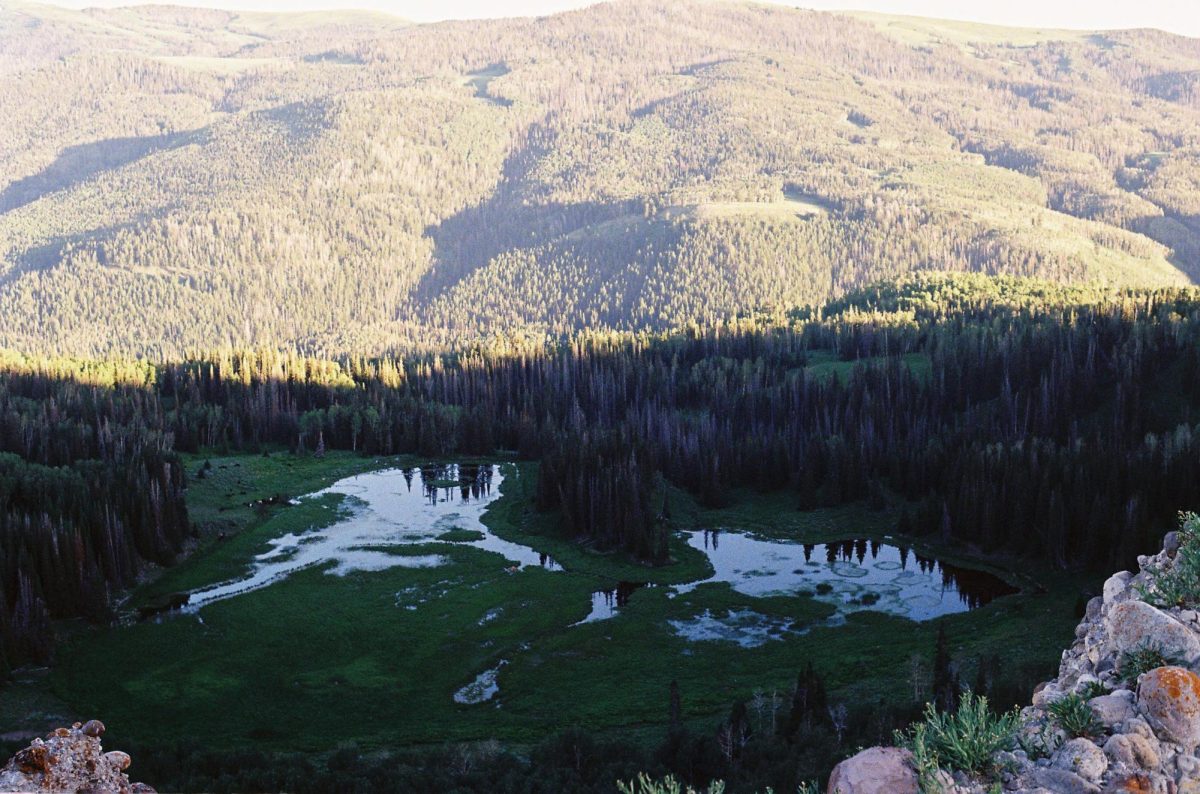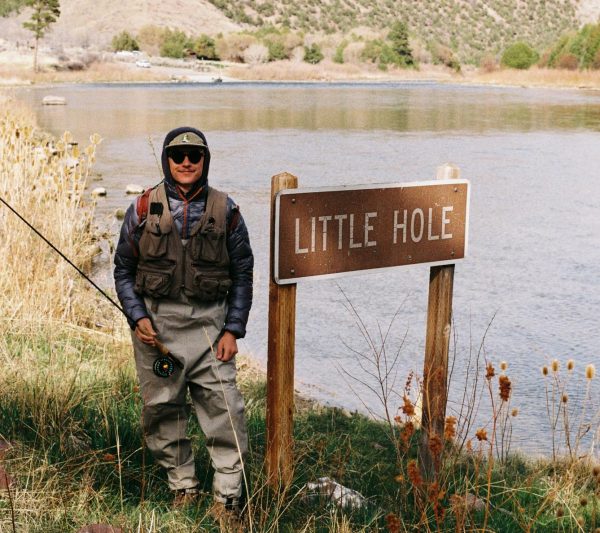After digital photography hit the mainstream market in the 1990’s, film photography slowly died out. Having a technology that allowed users to take virtually unlimited photos in comparison to film, where you have to basically buy every single picture you take, made film obsolete almost immediately.
Over the following decades, the remaining companies in the film industry slowly faded and transitioned to this new media. Film stocks were discontinued, developing prices skyrocketed, and other than the film photographer here and there, film photography slowly faded out of existence.
It was about two years ago when I was first introduced to the world of film photography. Beginning a trek of The Highline Trail, one of my hiking partners pulled out a small camera that fascinated me. While I had seen friends use it before, I was relatively unaware of what Fujifilm Disposable Cameras actually were.
As we hiked and talked about it more and more, I became obsessed with the idea of it. With only 36 exposures, each picture we captured was priceless. As we passed the camera back and forth over the next week, we took a great amount of consideration with every single photo. We were surrounded by breathtaking beauty in every single direction. With each passing mile and hour, the scenery would change and open up an opportunity even more gorgeous than the last, and I think this was what I found most appealing about film photography.
Living in a culture of iPhones and digital cameras, we can take pictures of whatever we want, often just pointing and shooting at any and everything we see. With this new media, I had to be incredibly thoughtful of what I really wanted to shoot.
Since that trip, I’ve been hooked. Every chance I get, I try to shoot film, and won’t go on any adventures without a trusty film camera by my side. On a trip to Zion, I shot with my first genuine film camera, a small point and shoot called the Minolta Freedom Explorer Zoom. Compact and portable like the disposables I had grown so fond of, this sturdy camera straight out of 1997 traveled with me through The Subway hike in the backcountry of Zion. As I tried out different film stocks like Kodak Portra 400 and Kodak 200 Gold, with each roll of film I shot, I felt like I was developing as a photographer.
And yet, I still felt like I could do more, improve my photography and have more creative control over the beautiful environments that I love to capture. While a great camera, the Minolta Point and Shoot had no manual focus, or any removable lens for that matter. I needed something more, and out of all places one would expect to find a quality camera, I ended up finding a jackpot in my girlfriend’s closet. In almost perfect condition, the Minolta Maxxum 7000 was the answer to my prayers. Tough enough to handle my trips and with a razor-sharp lens, I have used it to capture some of my favorite photos to this date. To this day, this is the camera that I’ve used for all of my photography seen in Wasatch Magazine.

Now all of this aside, I know a lot of people not familiar with film or those who just thought this was a fad are probably thinking, “why in the world would you spend so much on film when you can just shoot digital?” And honestly, it’s a really valid question. Like I mentioned earlier, it seems like film really doesn’t have a place in media today other than the nostalgic aspect and vintage look that so many people like. Film cost is astronomical, with some stocks pushing almost $30 for only 36 exposures, and that doesn’t even cover the cost of getting your film developed and scanned.
In addition to this, film cameras really aren’t being made any more, and other than the camera you might find on Ebay (or in your grandma’s closet) it feels like it would make a lot more sense to just buy a digital camera that is widely available. At the end of the day, these are drawbacks that can’t be ignored, but I think that film absolutely still has its place capturing the beauty of the outdoors, perhaps even more so than digital photography.
The biggest thing that stands out to me when shooting film rather than digital is the emphasis that I have to make on being intentional with each shot I take. Every scene I compose comes with an intense amount of consideration, and I think that’s not something that one can really find anywhere else. With digital photography, there are no risks. You can shoot whatever you like however many times you want to, and if the picture still isn’t what you’d like it to be, there are ample editing software at your disposal to make changes.
With film, so much more is at stake than just the monetary cost of a “wasted” photo. By accidentally overexposing a shot or failing to get it just right, you miss the moment in time you found meaningful enough to capture. Out of any of the mountain ranges, valleys, skies, or even the smallest flowers, this specific frame is what you chose to shoot. By capturing it on film, you truly capture that moment, and your true perspective of that moment in time. If you don’t get it right that one time, it’s lost. And I think that is really the biggest appeal of film over digital photography.
When it comes to being outside and capturing the raw, rugged beauty of our wilderness, the grain and color in film is something that really can’t be described. When I take any photo, my goal is to capture the majesty of the scene exactly through my own personal, creative lens, and there’s something about the depth and color of film that has really allowed me to do that. Despite the dreamy and sometimes “vintage” look of developed film, it shines in capturing shots that tell so much more of the story than just for nostalgia’s sake. If you don’t quite believe me, you can constantly find film used in professional media that you may not have noticed before. In the 2023 edition of the Patagonia Catalog, the front cover features a photo shot by photographer Brian Kelly captured in Kodak Portra 160. Despite the thousands of digital options available for this photographer to use, he chose film to capture this shot.
For outdoor enthusiasts and professional photographers alike, shooting film shouldn’t just be viewed as a trend. Despite its collapse with the introduction of digital photography, it absolutely has its place in recreational and commercial photography today, and there are ample resources that still provide services for film. For those living in Utah and the Wasatch Front, Allen’s Camera is a phenomenal service. With locations from Provo to Layton, and a store just a few minutes away from the U, there is no better place in Northern Utah to get film developed and processed! This is personally where I have taken every single roll of film to get developed over my time shooting; they easily provide the best prices in the game.
If you haven’t already, I would recommend trying out film. Even if it’s just a disposable, the feeling of getting your scans back from the lab is unmatched, and having something by your side to capture your expeditions in a new perspective is an opportunity not to be passed up on. Get some film and get outside.




